The Hellenic Navy has a full-scale working reconstruction an ancient Greek trireme which floats in the waters of the Saronic Gulf and is a must-see for anyone visiting Athens or the Port of Piraeus. Her most recent voyage was on September 28th and 29th, 2018, to commemorate The Battle of Salamis, a decisive victory of the ancient Greek fleet over the Persian navy — in which the trireme was key to the Greek victory.
A trireme is a fast, maneuverable type of galley with three banks of oars and a formidable ram at its prow, which was used by several different cultures of the Mediterranean. The design of this type of warship was perfected by the Athenians, and with it, their fleet dominated the Aegean Sea.
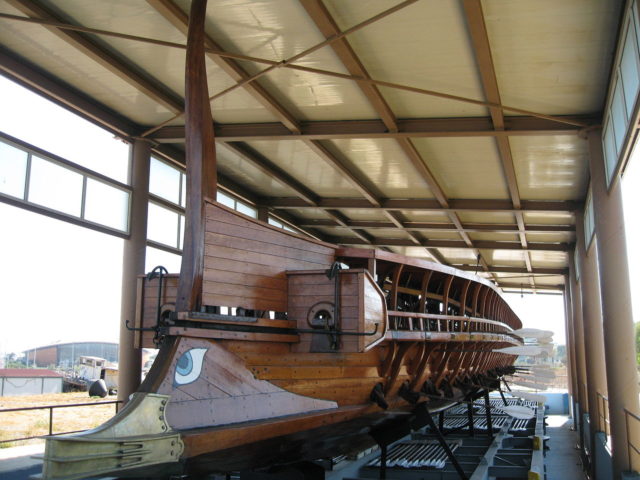
In 1982, naval architect John F. Coates joined forces with historian J.S. Morrison and classics teacher Charles Willink to create the Trireme Trust, with the goal of constructing an accurate replica of an authentic trireme. By 1987, the HS Olympias, built over two years by a shipbuilder in Piraeus, was ready for her first sea trial.
The ancient Greeks were a collective of city states, united by their language and culture, and most importantly by their navy. Despite the widespread use of the trireme, no surviving examples have been recovered. In 2018, the Black Sea Maritime Archaeology Project announced the discovery of an intact 75-foot vessel dated to 400 BC that could be a Greek trireme, however the wreck is too delicate to be brought to the surface.
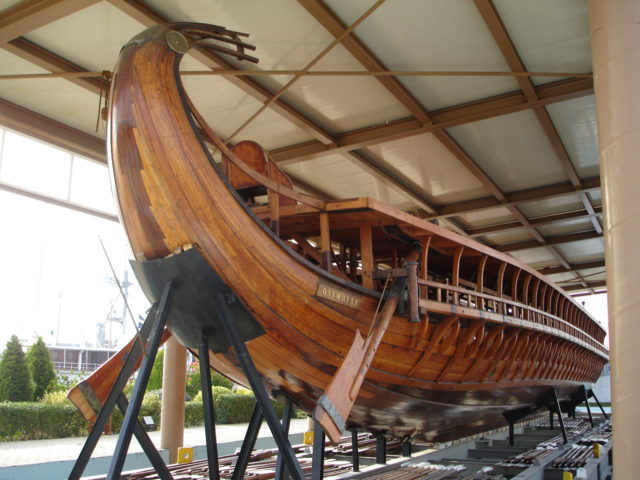
Coates developed the drawings for their project based any resource he could find, including historical writings that describe the ships, archaeological evidence, and ancient art such as book illustrations and painted pottery.
The project was very expensive and financed by the Hellenic Navy, as well as individual donors such as Frank Welsh, a banker and trireme enthusiast who was a major financial backer of the Trireme Trust.
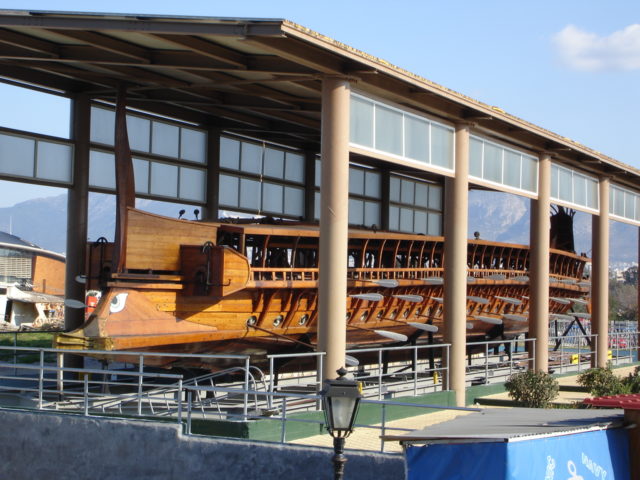
In part, the team were inspired to embark on the project simply to prove that it could be done. As the Trireme Trust website reports, “A series of six sea-trials between 1987 and 1994 demonstrated that the ship could be rowed efficiently and fast, despite almost universal academic opinion that a three-level arrangement of oars was wholly impracticable.”
She was crewed during sea trials by volunteers who took up the 170 oars. The reconstructed trireme was able to reach a top speed of nine knots. They were unable to maintain the cruising velocity of seven knots that the ancient Greeks achieved, according to Owlcation.
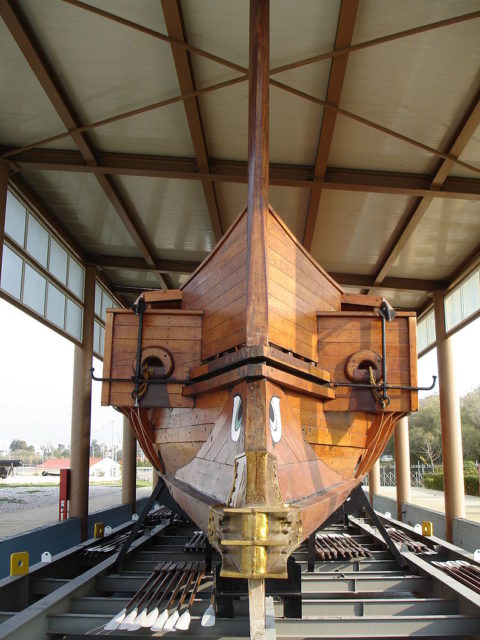
Olympias can also perform some clever maneuvers such as turning itself around 180 degrees in just one minute, confirming the authenticity of historical accounts.
Virginia oak, Oregon pine, and an Iroko hull were used for building the trireme. It was adorned with a bronze bow ram weighing 441 pounds. The ram was based on an original model, part of the collection at the Piraeus archaeological museum.
Olympias was built as a test model, adapted for recreational sailing instead of attack. Originally, triremes were aggressive, fast ships, meaning that they were built as light as possible. Also, they were very long, in order to fit in so many oarsmen.
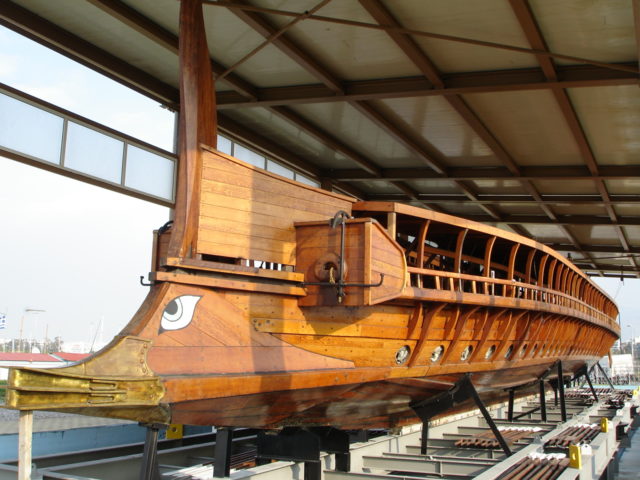
The only thing that made the triremes susceptible to stress damage was the waves. Therefore, a hypozomata (bracing rope) was firmly fixed beneath the deck, tying the two ends of the ship (bow and stern) together. On Olympia a steel rope was used as the hypozomata due to a lack of natural fibre ropes with the same elasticity as hemp, the material that was originally used for making the bracing rope.
Rather than exerting constant tension like a natural fibre rope, the steel cables tension varied as the hull bent on the waves. Consequently, protective measures had to be taken, as there was an alarming possibility of the rope breaking and endangering the crew.
Read another story from us: Research Team Close to Finding Antarctica’s Most Famous Shipwreck
In 1993, Olympias was proudly sent off to Britain where it took part in the celebration of 2,500 years since the beginning of democracy. In 2004, she carried the Olympic Flame from Keratsini to Piraeus for the Summer Olympic Games in Athens.
The successful reconstruction of the trireme is considered to be of extreme archaeological importance. To preserve her from deteriorating, writes Owlcation, the Greek navy now keep her on display in dry dock at Palaio Faliro, Athens.
